Diving into the world of currencies can feel like stepping into a different universe — charts filled with strange symbols, numbers moving every second, and terms like pips, spreads, and leverage flying around. Yet, behind the jargon lies one of the most exciting opportunities for individuals today: forex trading. If you’ve ever wondered how to trade forex for beginners, this guide will walk you through the essentials step by step, helping you cut through the noise and build a clear path to your first confident trade.
Key Takeaways
- Forex (foreign exchange) is the global market of currency trading, where one currency is exchanged for another.
- Beginners should start with major, liquid currency pairs and use demo accounts before risking real money.
- Profit opportunities exist through price movements and leverage, but risks are substantial.
- Good risk management, discipline, and a simple trading plan are crucial from the beginning.
- A modest amount (sometimes as little as $10–$100) can suffice to begin, depending on the broker and account type.
- Understanding charts, technical tools, and market structure is essential to making informed trades.
Table of Contents
How Does the Forex Market Work for Beginners?
Who Trades on the Forex Market?
What Is Forex Trading and How to Trade It as a Beginner?
Steps on How to Trade Forex for Beginners
How to Make Money Trading Forex as a Beginner
How Much Do You Need to Start Trading Forex for Beginners?
Basic Forex Trading Strategies for Beginners
How to Read Forex Charts for Beginners
Types of Forex Markets Beginners Should Know
Psychological Challenges When Learning How to Trade Forex for Beginners
Pros and Cons of Forex Trading for Beginners
Forex Trading vs. Investing for Beginners
FAQ: How to Trade Forex for Beginners
🔗 What
What Is the Forex Market?
The foreign exchange market (forex or FX) is a global, decentralized marketplace where currencies are traded. It’s not a single exchange, but rather a network of banks, brokers, financial institutions, corporations, and individual traders interacting electronically.
In forex, one currency is exchanged for another. For example, you might buy euros (EUR) with U.S. dollars (USD), hoping the EUR will strengthen relative to USD so you can sell it later at a profit.
Some characteristics of the forex market:
- It operates 24 hours a day, 5 days a week (across major financial centers in different time zones).
- It is the largest financial market in terms of volume — trillions of dollars in currency transactions occur daily.
- It is highly liquid (especially for major currency pairs), which generally means you can enter and exit trades readily.
- Currencies are quoted in pairs (e.g. EUR/USD, GBP/JPY), meaning you always buy one and sell another.
Because of its size and liquidity, forex offers unique opportunities — but also risks, especially for beginners without proper discipline.
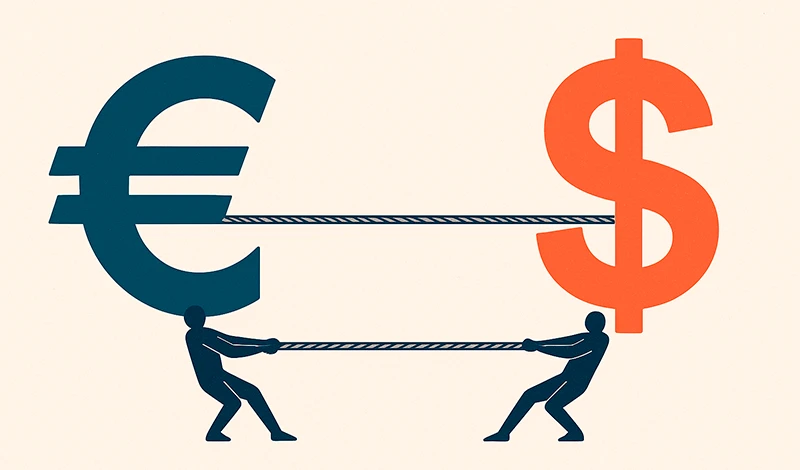
🔗 How
How Does the Forex Market Work for Beginners?
To understand how the forex market works as a beginner, you need to grasp several foundational concepts:
Currency Pairs
Every forex trade involves a pair of currencies: the base currency and the quote currency.
For example, in EUR/USD = 1.1000, EUR is the base currency and USD is the quote currency. If the price moves to 1.1050, it means 1 EUR costs 1.1050 USD.
Currencies are categorized broadly:
- Major pairs: include the USD and another strong, widely traded currency (e.g. EUR/USD, GBP/USD, USD/JPY)
- Minor (cross) pairs: pairs not involving the USD directly (e.g. EUR/GBP)
- Exotic pairs: pairs involving less liquid or emerging-market currencies (e.g. USD/TRY, USD/ZAR)
Beginners are usually encouraged to stay with major and minor pairs because of better liquidity, tighter spreads, and more predictable behavior. According to NordFX article on currency pair choice, major and liquid pairs are recommended for beginners.
Price Movements and Pips
A pip (“percentage in point”) is the smallest standardized price move in a currency pair. For most pairs, it’s the fourth decimal place (0.0001). Moving from EUR/USD 1.1000 to 1.1005 is a 5-pip move.
Traders measure gains or losses in pips. Because each pip has a monetary value (depending on your position size), pip movements translate into profit or loss.
Spread, Slippage, and Commission
- Spread: the difference between the buy (ask) and sell (bid) price. It is a cost you incur when entering a trade.
- Slippage: the difference between expected trade execution price and actual execution price, often during volatile markets or low liquidity.
- Commission: some brokers charge a fixed commission per trade in addition to or instead of spread.
As a beginner, you want to minimize transaction costs — choose brokers with tight spreads and transparent commissions.
Leverage and Margin
Forex brokers often allow you to use leverage, meaning you control a larger position with a smaller amount of capital (margin). For example, 50:1 leverage means you only have to put up 1/50th of the position’s value. This magnifies both profits and losses.
Your "margin" is the amount of money the broker holds as collateral to support your open positions. If your losses approach your margin, you may receive a margin call — a demand to add funds or close trades.
Types of Orders
Beginners should understand common order types:
- Market order – buy or sell immediately at current market price.
- Limit order – buy or sell at a specified price or better.
- Stop (stop-loss) order – automatically close a position if price moves against you to a predetermined level.
- Take-profit order – automatically close a position once your target profit is reached.
Understanding how orders work ensures you control your entry and exit risk.
🔗 Who
Who Trades on the Forex Market?
A wide variety of participants operate in the forex market:
- Commercial and investment banks: major liquidity providers, handling large currency flows for clients.
- Central banks: intervene to manage their national currencies and influence monetary policy.
- Corporations / Multinationals: make currency trades for business operations (e.g. paying overseas suppliers, hedging currency risk).
- Hedge funds, investment funds, and institutional traders: trade large volumes, often using complex strategies.
- Retail traders (individuals): smaller-scale participants trading via forex brokers.
While big players dominate volume, technology and online brokers have made forex trading accessible to individuals. That means you can participate, though your strategies, risk, and tools need to be scaled to your resources and experience.
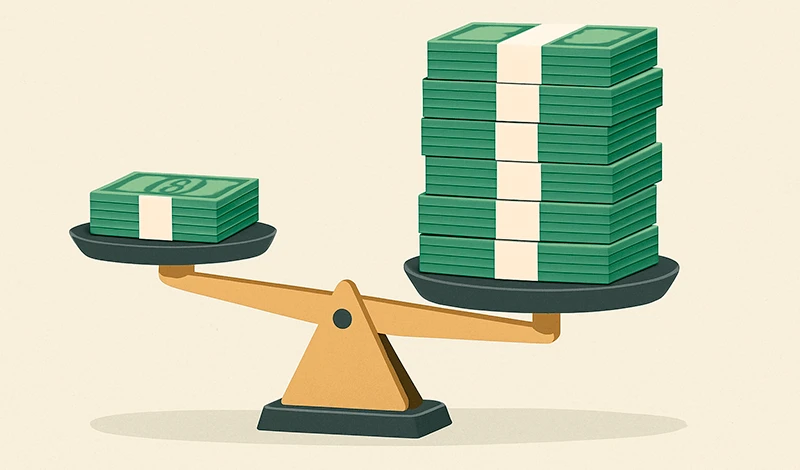
🔗 Trading
What Is Forex Trading and How to Trade It as a Beginner?
Forex trading, in essence, is the buying of one currency and the simultaneous selling of another, with the goal of profiting from changes in exchange rates. As a beginner, here's how you can approach it:
1. Pick a reputable broker: must offer reliable execution, good spreads, transparency, and regulation.
2. Open an account (demo first, then live) with that broker.
3. Download a trading platform (e.g. MetaTrader 4 or 5) and get familiar with its tools.
4. Plan your strategy: decide the pairs you’ll trade, timeframes, risk per trade, and analytical approach (technical, fundamental, or hybrid).
5. Test on a demo account: practice placing trades, setting stop-losses, take-profits, and dealing with volatility.
6. Gradual transition to live trading: start small, use risk management, and avoid emotional decisions.
In short, trading as a beginner is not about immediately making tons of money — it’s about disciplined learning, minimizing mistakes, and building a track record.
🔗 Steps
Steps on How to Trade Forex for Beginners
Here is a step-by-step roadmap to follow:
Step 1: Educate Yourself
Learn basic concepts: currency pairs, pips, spreads, leverage, margin, technical vs fundamental analysis, order types, risk management, psychology.
Step 2: Develop a Trading Plan
Your plan should define what pairs you’ll trade, when, how much risk, entry/exit rules, and acceptable loss per day or week.
Step 3: Analyze and Select Trades
Using your chosen method (technical, fundamental, or both), scan markets for trade setups.
Step 4: Place Trades with Risk Controls
Always use stop-loss and take-profit orders. Decide position size based on your account and risk tolerance.
Step 5: Manage Open Trades
Track your trades, move stop-loss to break-even when appropriate, consider scaling out, monitor market news.
Step 6: Review and Learn
Keep a trading journal of what went right or wrong. Analyze performance metrics.
Step 7: Gradually Scale Up
Once profitable and consistent on small sizes, you may scale position size or number of trades — but always with prudence.
Throughout each step, your focus should be on learning, protecting capital, and building confidence.
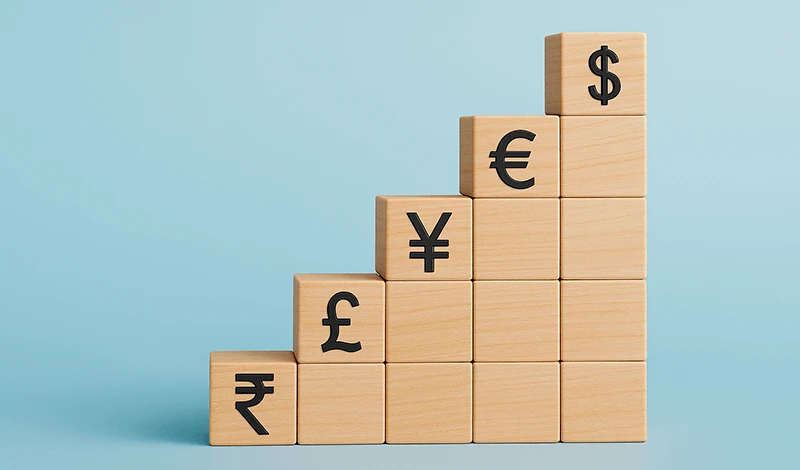
🔗 Money
How to Make Money Trading Forex as a Beginner
Profit Opportunities
You can make money in forex by correctly predicting directional moves in currency pairs. If you believe the base currency will strengthen vs. the quote currency, you buy; if you think it will weaken, you sell.
Because forex allows both long (buy) and short (sell) positions, you can profit in both rising and falling markets, unlike “buy-and-hold” approaches.
Leverage amplifies potential returns: a small move in price can yield significant profit when applied to a large leveraged position — but this cuts both ways.
Risks Involved
- Leverage risk: magnifies losses.
- Volatility and price gaps: sudden news events can cause large, unpredictable moves.
- Liquidity risk: in thin markets or exotic pairs, you might not be able to enter/exit at favorable prices.
- Psychological risk: fear, greed, and emotional bias can lead to poor decisions.
Very few new traders maintain profitability long term — the market is competitive, and success requires discipline, planning, and realistic expectations.
Here’s a simple illustration:
Scenario | Entry | Exit | Pips Gained / Lost | Position Size | Profit / Loss |
Trade A | EUR/USD 1.1000 | 1.1050 | +50 pips | 1 mini lot ($10 per pip) | +$500 |
Trade B (wrong direction) | EUR/USD 1.1000 | 1.0950 | –50 pips | 1 mini lot | –$500 |
If you used leverage, your actual capital at risk might be much smaller, but the impact is proportionally larger.
To succeed, you must aim for a favorable risk-reward ratio (e.g. risking $100 to gain $200 or more), and keep losses small while letting winners run (within reason).
🔗 Start
How Much Do You Need to Start Trading Forex for Beginners?
There is no universal requirement, but the necessary starting capital depends on the broker, account type, risk tolerance, and strategy. Many brokers allow beginning with very modest amounts — even as low as $10 or $50 — via “mini” or “micro” accounts.
For instance, NordFX offers MT4 Pro Trading Account and you can start with as little as $10.
🔗 Strategies
Basic Forex Trading Strategies for Beginners
You don’t need complex systems to begin. Here are some basic strategies suited to newcomers:
1. Trend-Following Strategy
You identify a trending pair (up or down) and take trades in the direction of the trend. Use tools like moving averages or trendlines.
2. Breakout Strategy
You wait for price to break a support or resistance level, then enter the trade once the breakout is confirmed (e.g. by volume or candlestick confirmation).
3. Pullback (Retracement) Strategy
In a trend, you wait for the price to retrace (move back) to a support or resistance (e.g. moving average or Fibonacci level), then trade in direction of the main trend.
4. Range / Support-Resistance Strategy
When price bounces repeatedly between defined support and resistance levels, you can buy near support and sell near resistance — but this works best in non-trending or quiet markets.
5. Simple Moving Average Cross Strategy
If a short-term moving average (e.g. 20-day) crosses above a longer-term one (e.g. 50-day), you buy; if it crosses below, you sell.
Each strategy should come with rules for entries, exits, and stops. Be cautious not to overcomplicate at first.
🔗 Read
How to Read Forex Charts for Beginners
Getting comfortable reading charts is one of the most important skills in forex. Here’s how to approach it:
Chart Types
- Line charts: basic, connecting closing prices over time — useful for an overview, but limited.
- Bar charts: show open, high, low, and close (OHLC) for each time period.
- Candlestick charts: same data as bar charts but visually more intuitive (with filled or hollow bodies). Most traders use candlesticks.
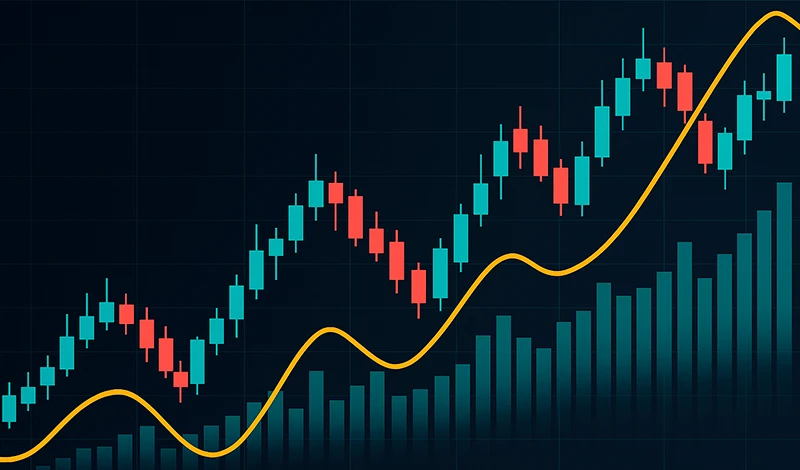
Time Frames
Charts are available over multiple time frames: 1 minute, 5 minutes, 15 minutes, 1 hour, 4 hours, daily, weekly, etc[I1] .
- Shorter timeframes (1–15 min) are used for intraday trading.
- Longer timeframes (daily, weekly) are better for swing or positional trades.
- Beginners should try medium timeframes (like 1-hour or 4-hour) before diving into ultra short-term.
Trendlines, Support & Resistance
- Trendlines: draw lines connecting higher lows (in uptrend) or lower highs (in downtrend).
- Support / Resistance: horizontal levels where price has historically reversed or stalled. These serve as decision zones.
Indicators and Overlays
Many traders overlay indicators to assist in reading charts. Examples:
- Moving Averages (SMA, EMA)
- Relative Strength Index (RSI)
- MACD (Moving Average Convergence Divergence)
- Stochastic Oscillator
Indicators help smooth price noise, identify momentum, and generate possible trade signals. But don’t rely solely on them — always check price action first.
Candlestick Patterns & Price Action
Candlestick patterns like engulfing, hammer, shooting star, doji, etc., offer insight into market sentiment. For example, a long wick above a candle’s body may suggest rejection of higher price.
Price action refers to reading the raw movement of price (support/resistance reactions, trend continuity or reversal) without over-reliance on indicators.
Chart Reading Example and Forex Trading Example
Suppose you look at EUR/USD 4-hour chart. You might see:
- Price trending upward, touching a trendline drawing higher lows.
- A recent pullback to moving average (say the 50 EMA) aligns with a prior support zone.
- A bullish engulfing candlestick forms near that support.
- You might decide to enter long with a stop just below the support zone and a target based on projected trend continuation.
With time, you’ll develop a feel for whether the chart is set up for a strong trade or better to let it pass.
🔗 Types
Types of Forex Markets Beginners Should Know
The forex universe is broad, but for a beginner it helps to sort it into a few practical buckets. Each market type presents different mechanics, cost structures, and use cases, but all revolve around exchanging one currency for another.
Spot forex
This is the most common way individuals trade currencies. Prices are quoted for immediate exchange, but your broker’s trading platform makes it feel instantaneous. You speculate on price changes in pairs like EUR/USD or USD/JPY. Retail traders typically access spot prices via contracts for difference (CFDs) or rolling spot accounts provided by brokers. Advantages include tight spreads on major pairs and 24/5 access. The main risk comes from leverage: small price changes can have outsized effects on your balance.
Forward and futures forex
Forwards are private agreements between two parties to exchange currencies at a set rate on a future date. Futures are standardized, exchange-traded contracts that accomplish the same thing, with daily mark-to-market and margining. Beginners rarely start with forwards because they are mostly over-the-counter and used by corporates and institutions to hedge. Futures, while more accessible, involve exchange rules, tick values, and margin requirements that add complexity. The upside is transparent pricing and central clearing.
Options on forex
Currency options give the right, but not the obligation, to buy or sell a currency pair at a set price before or at expiration. Options allow building strategies that cap risk (for a paid premium) or combine directional and volatility views. For most beginners, options are better explored after you are comfortable with spot trading and risk management.
Interbank market
Large banks trade with each other directly or through electronic communication networks (ECNs). Pricing here influences all other venues. Retail traders access a slice of this liquidity through brokers that connect to ECNs or aggregate several liquidity providers. Understanding that you are downstream of the interbank market helps explain why spreads widen around news and why liquidity varies by session.
Market structure by session
Forex flows rotate through the Sydney, Tokyo, London, and New York sessions. Liquidity and volatility are typically highest when London and New York overlap. Beginners can choose a session that fits their schedule, but should also consider pair behavior: JPY and AUD often see more activity during Asia hours; EUR and GBP are usually livelier in the London session; USD is central during the New York session, especially on major data releases.
Summary table
Market type | Who uses it most | Typical purpose | Pros | Cons |
Spot forex | Retail, banks, funds | Speculation, short-term hedging | High liquidity on majors, 24/5 access | Leverage risk, variable spreads |
Forwards | Corporates, banks | Hedging cash flows | Customizable terms | Illiquid for retail, counterparty risk |
Futures | Funds, sophisticated retail | Speculation, hedging | Exchange transparency, central clearing | Contract specs, margin rules |
Options | Funds, corporates, advanced retail | Hedging, volatility trading | Defined risk for buyers, flexible payoffs | Premium cost, complexity |
Interbank | Banks, large institutions | Market making, transfers | Deepest liquidity | Not directly accessible to retail |
🔗 Challenges
Psychological Challenges When Learning How to Trade Forex for Beginners
Trading is not just analysis and execution; it is also emotional management. Many beginners underestimate how much psychology affects results. Recognizing your own biases and creating structures to mitigate them is as important as any technical tool.
Fear of loss and the freeze response
Beginners sometimes hesitate to execute valid setups or to close losing trades because they fear realizing a loss. This can morph into holding and hoping. The remedy is predefining risk per trade and automating exits with stop-loss orders. When you know your maximum loss beforehand, fear has fewer places to hide.
Overconfidence after a win streak
Success can lead to oversized risk, overtrading, and ignoring rules. Overconfidence often appears right before a sharp drawdown. Counter it by hard-coding a maximum daily loss, maximum position size, and a rule to reduce risk after a streak of winners.
Revenge trading
After a loss, a trader might immediately place impulsive trades to “win it back.” This is one of the quickest paths to account depletion. Use a mandatory cool-off period (for example, step away for 20 minutes after any loss exceeding a set threshold) and set a daily stop: once you lose X, you are done for the day.
FOMO (fear of missing out)
Chasing moves after the setup has already played out leads to poor entries. Embrace the idea that the market offers endless opportunities. Create a watchlist and alert system so you are notified when a planned setup forms rather than reacting to noise.
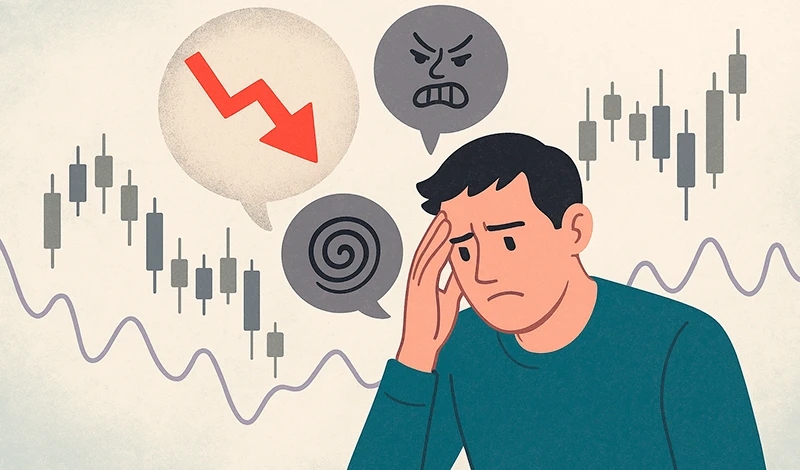
Anchoring and confirmation bias
Anchoring means sticking to a first opinion despite new evidence. Confirmation bias is seeking only data that supports your view. To reduce both, write a pre-trade checklist that requires you to scan for evidence against your trade before entering. If contradictory signals outnumber supportive ones, skip the trade.
Perfectionism and system hopping
Some beginners expect a system with no losses and, failing to find it, constantly switch strategies. This prevents the sample size needed to evaluate any approach. Accept that losses are part of the game. Commit to testing one defined plan over a statistically meaningful number of trades before judging it.
Practical guardrails for your mindset
Challenge | Symptom | Guardrail |
Fear of loss | Hesitation, moving stops away | Fixed risk per trade, hard stops |
Overconfidence | Oversized positions | Max position cap, reduce size after win streak |
Revenge trading | Rapid-fire trades post-loss | Mandatory cool-off, daily stop |
FOMO | Late entries | Alerts for planned levels, pass on missed moves |
Anchoring | Ignoring new data | Pre-trade checklist including disconfirming evidence |
System hopping | Frequent strategy changes | Minimum sample size before evaluation |
🔗 Cons
Pros and Cons of Forex Trading for Beginners
Objectively weighing benefits and drawbacks helps set expectations and choose a style that fits your temperament and schedule.
Advantages
Access and flexibility. Forex is open 24 hours a day during the workweek. You can trade before or after your day job, and you can start with relatively small capital.
Two-way opportunities. You can go long or short with equal ease. This makes it possible to potentially benefit from both rising and falling markets.
High liquidity on majors. Major pairs like EUR/USD or USD/JPY typically have tight spreads, making transaction costs lower than many other markets.
Abundant educational material and tools. Platforms offer charts, indicators, and order types; there are endless resources to learn from.
Disadvantages
Leverage risk. The same leverage that attracts traders can quickly magnify small adverse moves into large losses.
Volatility and event risk. Economic data, central bank announcements, and unexpected news can cause gaps or whipsaws.
Psychological load. Constant price movement tempts overtrading and emotional decisions. Maintaining discipline day after day is challenging.
Learning curve. Understanding market structure, risk management, and consistent execution takes time and practice. Early losses are common.
Quick reference: pros vs cons
Pros | Cons |
24/5 access across sessions | Leverage can accelerate losses |
Ability to go long and short | Event-driven gaps and slippage |
Tight spreads on major pairs | Emotional strain and discipline demands |
Low starting capital possible | Steep learning curve |
🔗 Investing
Forex Trading vs. Investing for Beginners
Trading and investing exist on a spectrum of time horizons and objectives. Understanding the differences helps you decide how to allocate your time and capital.
Time horizon and turnover
Trading focuses on short to medium-term moves, from minutes to weeks. Positions are opened and closed frequently. Investing targets longer horizons of months to years, with fewer transactions and a focus on compounding.
Decision drivers
Trading decisions often rely on technical analysis, patterns, and short-term catalysts. Investing emphasizes fundamentals: economic trends, interest rates, valuation metrics, and company or country prospects.
Risk and drawdowns
Traders attempt to cap risk per trade with stops and position sizing, accepting frequent small losses in pursuit of larger wins. Investors tolerate larger interim drawdowns in exchange for long-term growth, often using diversification rather than stop-losses.
Lifestyle fit
Trading demands screen time and rapid decision making during your chosen session. Investing can be more hands-off, with periodic portfolio reviews. Your personality and schedule should guide your choice.
Comparison table
Dimension | Trading | Investing |
Horizon | Minutes to weeks | Months to years |
Primary tools | Technical analysis, price action | Fundamentals, macro, valuation |
Risk control | Stops, position sizing | Diversification, rebalancing |
Activity level | High | Low to moderate |
Goal | Capture shorter-term moves | Build long-term wealth |
Psychological demands | Fast decisions, discipline | Patience, conviction through volatility |
Some beginners mix both: they maintain a long-term investment portfolio while practicing a tightly risk-managed trading plan with a small portion of capital. This can reduce pressure on the trading side and allow learning without jeopardizing broader financial goals.
🔗 FAQ
FAQ: How to Trade Forex for Beginners
What is the simplest way for a beginner to start trading forex?
Begin with a demo account to learn platform mechanics and test a very simple plan: pick one or two major pairs, one timeframe (for example, four-hour), one entry pattern (such as a pullback to a moving average with a confirming candlestick), and a fixed risk per trade. Trade that plan consistently before going live with small size.
How much money do I really need to start?
Technically, some accounts allow very small deposits. Practically, choose an amount you can afford to lose without stress, and size positions so each trade risks 1% or less of your balance. Starting with more capital gives greater flexibility, but risk discipline matters more than the starting figure.
Which currency pairs are best for beginners?
Major pairs like EUR/USD, USD/JPY, GBP/USD, and USD/CHF typically offer the tightest spreads and deepest liquidity. That generally means lower costs and fewer erratic moves compared to exotics.
Should I trade news as a beginner?
Not at first. While news can create big moves, slippage and whipsaws are common. It is better to learn how price behaves around scheduled events, reduce size, or stand aside until volatility normalizes.
What leverage should I use?
Use the smallest leverage that still allows your strategy to function. Many beginners start with effective leverage well below the maximum available. Think in terms of dollars at risk per trade rather than trying to maximize notional exposure.
How do I set a stop-loss?
Place your stop where the original idea is invalidated, not at an arbitrary distance. For example, below the recent swing low in an uptrend or beyond a key support level. Then calculate position size so the loss at that stop equals your chosen risk (for example, 1% of your account).
What is a good risk-reward ratio?
Aim for trades where the potential gain is at least as large as, and preferably larger than, the amount you are risking. Many traders target 1.5:1 or 2:1 or better. This way, you do not need a very high win rate to be profitable.
How many trades should I take per day?
There is no magic number. Quality beats quantity. Set a daily loss limit to prevent overtrading and a maximum number of trades to maintain focus. Many beginners benefit from fewer, higher-quality setups on higher timeframes.
Which timeframe should I use?
Choose a timeframe that fits your schedule and temperament. If you cannot watch markets constantly, avoid the one-minute and five-minute charts. Many new traders find the one-hour or four-hour charts provide enough signals without overwhelming noise.
Do I need many indicators?
No. Start with price action, support/resistance, and one or two simple indicators such as a moving average and RSI. The goal is clarity, not complexity. Add tools only if they demonstrably improve your decisions.
How do I avoid emotional decisions?
Predefine everything you can: markets to trade, times to trade, entry and exit rules, risk per trade, and a daily stop. Use alerts instead of staring at every tick. Keep a journal to review whether you followed your plan.
What is a trading journal and why keep one?
A trading journal records date, pair, setup, entry, stop, target, result, screenshots, and notes on execution and emotions. It turns your trading into a measurable process. Over time, it reveals your strengths and weaknesses better than memory.
Is copy trading a good idea for beginners?
Copying more experienced traders can be educational, but results will vary based on your settings and timing. If you use it, diversify providers and still impose overall risk limits. Consider it a learning tool rather than a substitute for understanding risk.
Can I trade forex part-time?
Yes. Choose a specific session or a couple of hours that fit your schedule. Focus on pairs active in that session and use alerts for planned levels. Consistency in when and how you trade matters more than the number of hours.
How long does it take to become consistently profitable?
There is no fixed timeline. Expect months of structured practice and review. The biggest accelerators are strict risk management, trading one clearly defined plan, and gathering enough trade data to learn from.
What should I do after a losing streak?
Reduce size, step away briefly, and review your journal. Identify whether you broke rules, whether market conditions changed, or whether the losses are within statistical norms. Only resume normal size after regaining composure and clarity.
Are demo results reliable?
They are useful for learning mechanics and testing ideas, but live trading introduces spreads, slippage, and real emotions that demos cannot fully replicate. Treat demo as practice, then transition to live with very small size to bridge the psychological gap.
What is the most important success factor for a beginner?
Consistent risk management. Many different strategies can work, but none can survive poor risk control. A small, controlled loss today is the tuition that keeps you in the game long enough to learn.
Quay lại Quay lại
